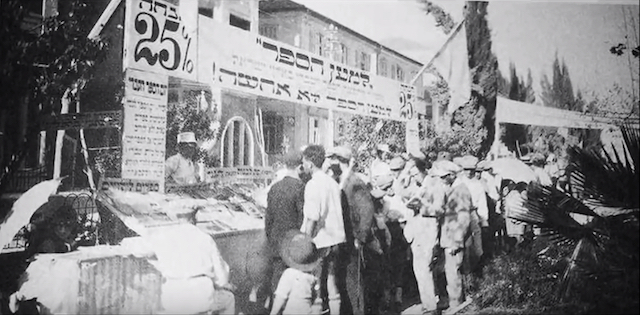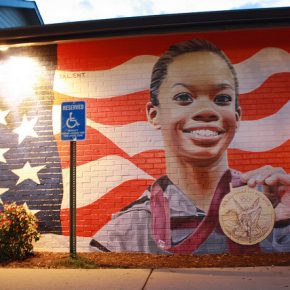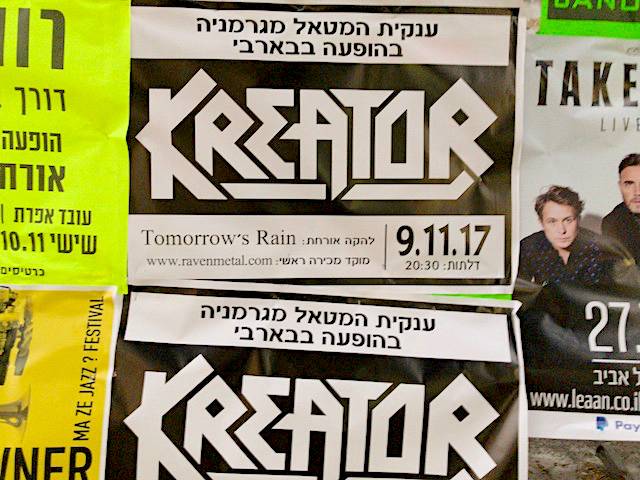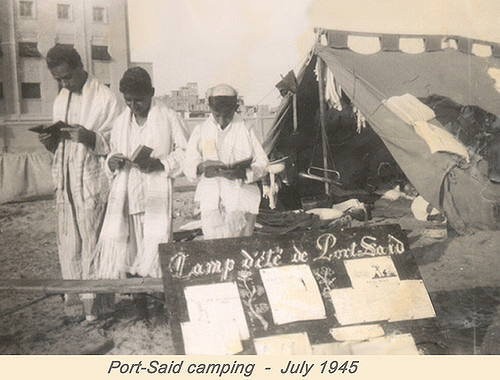I was three years old when father bought a charming colonial style two-storey villa on No. 14 Nahmani Street, in Tel Aviv. It had the traditional, symmetrically laid out garden. In each part of the neatly divided area, a baby palm tree spread its wide fan-shaped branches shading the oval flower bed in which it stood.
A tall black grilled gate opened with a squeak to a flight of stone steps leading to the raised garden. There were two square pillars, one on each side of the gate. I used to sit on one of those pillars to watch passers by. I remember the garden embracing the house as a distant, magic paradise….The house and the garden are now buried under a skyscraping office building, leaving no trace of my childhood days. Gone are the butterflies, the spiders… cats giving birth, sheltered under our garden bushes, and sometimes hiding under my bed…
It was a peaceful street in the ‘thirties, in small and peaceful Tel-Aviv. At night you could hear the jackals howling.
My parents awakened me one night and carried me to the living room balcony to witness a Zeppelin airship flying over our house.
There was shouting and screaming from the house next door one day. A neighbour has had too much to drink.
There were street cries. A bilingual Arab dressed in the traditional Sirwal, selling “sand” with which we cleaned our pots and pans. Zaand! Yala ya Zand! In Yiddish and in Arabic. … There was a little old man buying and selling bottles – Fleschlach, fleschlach!! And the old clothes man, the Alte Sachen man dressed in the shabby old clothes he was selling. Alte Sachen, alte Schich, alter Rok, alte Behttt…!!!
Sunday was the day the shoemaker came to Nahmani Street, announcing his arrival in Hebrew and in Yiddish: Mettaken Nalayim, farechten schich !
My sister Racheli and I always looked out for him. Once you missed him, you had to wait till next week. The moment we heard him coming, we rushed downstairs, across the garden and again down the garden steps to have our sandals repaired.
He seemed quite comfortable seated on the cool pavement in front of the house, as he hammered nails into the soles of our sandals. He always wore the same old clothes and dirty old cap and that is how I remember him.
And there was the beggar, ‘der Zwei mil Mann” father called him. He arrived regularly every Monday to collect his weekly allowance of two Mils. By the kitchen entrance, of course. He came, collected his money and left without a word.
Down the street at No. 4, a loud brass band disturbed the silence on Fridays.
From a neighbouring house, a woman could be heard calling her children: Jacquou!! Giselle!!
Then there were the lovers walking up Nahmani Street in the morning and down again in the late afternoon.
Facing our house, on the other side of Nahmani Street stood a handbag and luggage workshop. At lunchtime, they all came out for sandwiches and a stroll along Nahmani Street. It was then that I must have fallen in love for the first time. I was, seven years old. He was, I suppose, a handbag maker and his hair was black and curly. I recall waiting to see him on his sidewalk lunch break.
The building housing the handbag workshop still stands… but all the rest is gone. Kreisler’s pharmacy, the villa with the large garden and the lawn where we played croquet, Kikayon the grocer whose son was kidnapped one morning… There was little Nimrod who wore his velvet suit and lace collar on the Sabbath, but that was almost eighty years ago.
Screenshot public domain.





